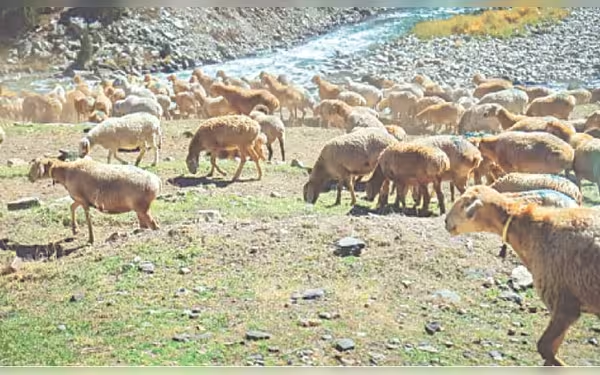Saturday, November 16, 2024 07:39 PM
Pakistan Considers Lifting Livestock Export Ban
- Government plans to lift decade-long livestock export ban.
- Increased demand from Gulf countries drives policy change.
- Livestock sector crucial for Pakistan's economy and rural livelihoods.
 Image Credits: dawn
Image Credits: dawnPakistan's government is considering lifting a ban on livestock exports to meet Gulf demand and boost the economy.
In a significant development for Pakistan's agricultural sector, the government is contemplating lifting a ban on the export of livestock, specifically sheep and goats, which has been in place for over a decade. This potential policy change is primarily driven by increasing demand from Gulf countries, where there is a growing market for live animals. The Ministry of National Food Security and Research (MNFSR) has prepared a summary to present to the federal cabinet, seeking approval to reverse the decision made in 2009 that prohibited such exports.
The Executive Committee of the Special Investment Facilitation Council (SIFC) has already reviewed the situation and expressed agreement on lifting the ban. The summary indicates that several domestic investors have initiated small- to medium-scale feedlot fattening farms, which are expected to generate a surplus of goats and sheep in the near future. Furthermore, the MNFSR has reached out to various countries, including Saudi Arabia, Kuwait, and the UAE, to attract investment in these feedlot operations.
The agriculture sector plays a crucial role in Pakistan's economy, contributing approximately 24 percent to the gross domestic product (GDP). Within this sector, livestock is particularly significant, accounting for 60.84 percent of agricultural value added and 14.5 percent of the GDP for the fiscal year 2023-24. Animal husbandry is vital for rural communities, with over 8 million families involved in livestock production, relying on it for 35-40 percent of their income.
As of 2023-24, Pakistan boasts a diverse inventory of food-producing animals, totaling 224.7 million heads. This includes 57.5 million cattle, 46.3 million buffaloes, 32.7 million sheep, 87 million goats, and 1.2 million camels. The country produces around 70 million tonnes of milk and 3.447 million tonnes of meat, which includes 2.630 million tonnes of beef and 0.917 million tonnes of mutton, along with 2.363 million tonnes of poultry meat.
Historically, the export of live animals was allowed with the approval of the Economic Coordination Committee of the Cabinet (ECC) in 2009. However, rampant smuggling, particularly across the porous border with Afghanistan, led to local shortages and price instability in the domestic market. Consequently, a ban on the commercial export of live animals was imposed in July 2013 to stabilize prices and manage the supply chain effectively.
With the implementation of effective anti-smuggling measures and border fencing, the demand and supply situation has improved, leading to greater price stability for mutton. The SIFC's consent to lift the ban reflects the high demand from Gulf countries and the potential for economic growth in Pakistan's livestock sector.
Lifting the ban on livestock exports could open new avenues for economic development in Pakistan. It not only promises to enhance the livelihoods of millions of families engaged in animal husbandry but also positions the country as a competitive player in the international livestock market. As the government moves forward with this proposal, it will be essential to ensure that domestic needs are met while exploring these new opportunities.













